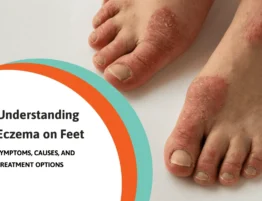
Do you think you or someone you love might have neuropathy? Perhaps you’ve just been diagnosed with it and you are looking for answers.
You’ve come to the right place. Today, we are going to talk about neuropathy symptoms, locations, and causes of neuropathy. In Part 2 of this blog, we will talk specifically about treatment options, and share stories of patients who have found hope and relief from their symptoms. Let’s get started.
What are the symptoms?
Patients with neuropathy will usually experience:
- Pain
- Burning
- Tingling
- Numbness
- Weakness
These symptoms don’t all need to be present. One person may have a lot of numbness and slight amounts of burning, while another may have numbness and weakness, but no tingling.
So the combination of these symptoms, and the amounts of different symptoms are widely varied. The symptoms may be periodic in the beginning, and then eventually occur 24 hours a day. They may be barely noticeable during the day, but then haunt you by at night by keeping you awake.
The symptoms may have been very mild for many years with very slow progression. Or, you may be experiencing a rapid progression of symptoms getting worse very quickly.
Where do the symptoms occur?
This is one of the most important things to consider. Many times, I have seen patients who think they are getting neuropathy because they have numbness in one or two toes. Or, maybe it’s in a small area on the side of the foot.
A small location is not common with neuropathy symptoms. To qualify as true neuropathy, symptoms need to be found in a larger area. For example, the entire bottom or top of the foot. Or, in many cases, the top and bottom of the foot, including all the toes.
Symptoms may not be shared equally in both feet and legs. It can occur more in the lower legs than in the feet. In medical school, we were taught that neuropathy occurs in both feet equally. But, I will tell you from years of experience treating patients, this is not what I have seen day to day. What I have seen consistently, is that the symptoms are typically located in larger areas of the foot and leg, usually below the knee.
What causes neuropathy?
Diabetes may be a potential cause of neuropathy, and many people assume that you have to have diabetes to get neuropathy. This is not true. Although a high percentage of patients with diabetes do get neuropathy, we see many who do not have diabetes. Some patients have neuropathy that may have been caused by alcoholism or chemotherapy, and as a result, the nerves have become damaged. Whatever the cause, the locations and symptoms still apply.
Lastly, don’t be confused by the big words thrown around to diagnose neuropathy. You may have heard “peripheral idiopathic polyneuropathy.” Big words yes, but let’s break it down. “Peripheral” means that your symptoms are in the periphery, which means away from the midportion or trunk of your body. “Idiopathic” means from unknown cause. And finally, “polyneuropathy” means in multiple locations. So very simply, this term means that you have neuropathy symptoms away from your midsection, in multiple locations, and they don’t know what caused it.
Neuropathy can be very frustrating and debilitating. I see patients every day who are looking for answers, and the good news is that we can help!
Stay tuned for Part 2 of this series to learn about treatment, and hear stories of hope.
To learn more about how we treat neuropathy, click here.
To make an appointment, click here.









Write a comment: